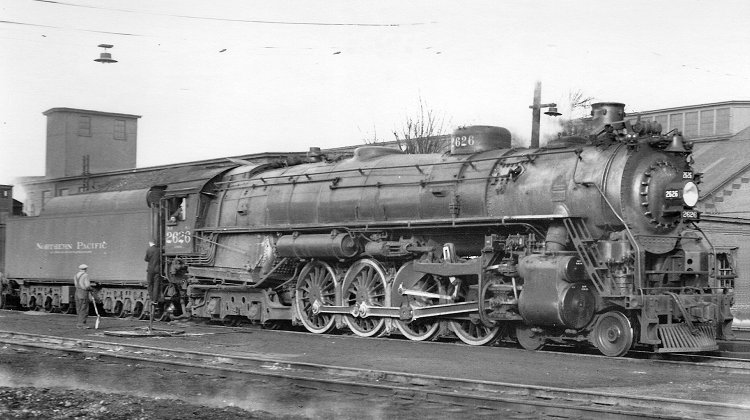In 1930, to demonstrate the efficiency of its roller bearings, the Timken Company had the American Locomotive Company build a 4-8-4, numbered 1111, with Timken's tapered roller bearings on all axles. The "Four Aces," as No. 1111 was nicknamed, made trial runs on fourteen railroads over a two-year period and ended up on the Northern Pacific where it suffered damage to the crown sheet due to low boiler water. As Timken did not want to keep the engine, the NP bought it in 1933 and numbered it 2626 in class A-1. After repairs, and also after conversion to burn oil in 1947, No. 2626 operated successfully until 1957 when — although an historic locomotive, — it was scrapped. Built as an ALCo demonstrator, it had 73-inch drivers, 27x30-inch cylinders, and 250 p.s.i. of boiler pressure. Weighing 417,500 pounds, it developed 63,700 pounds of tractive effort. Since its firebox was not designed to burn Northern Pacific's low-grade coal it was smaller than those of the railroad's other Northern types, at 88 square feet of grate area. Evaporative heating surface was 5120 square feet and superheating surface 2155 square feet. This photo, purchased from an eBay seller, was taken in 1939 but location and photographer are unknown.

|
|
|